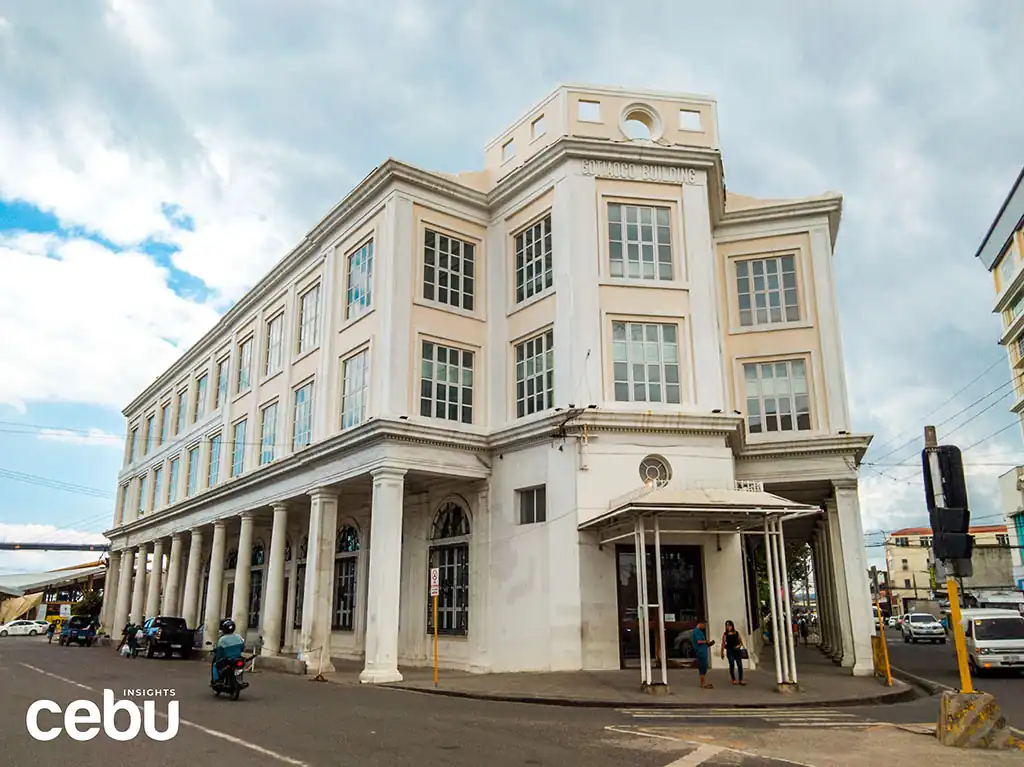The Sugbu Chinese Heritage Museum highlights the relationship between China and Cebu.
On September 2nd, the Sugbu Chinese Heritage Museum opened its doors to the public. For an entire day, Cebuanos got the chance to learn more about the connection between the Philippines and the Red Dragon of Asia.
This is the first museum to highlight the Chinese community in the Philippines, specifically in Cebu. It has many exhibits, antiques, and dioramas depicting historical moments and highlighting the relationships between Cebuanos and Chinese immigrants.
The museum is located at the Gotiaoco Building right across from Cebu City Hall, next to Senior Citizen’s Park.
The heritage museum was open to the public for one day on September 2nd, 2023.
It had its soft opening in 2020, but temporarily closed due to the COVID-19 pandemic. As of today, it is only open when booked for private tours.
The museum is still being completed as of 2023, with management continuing to accept donations for the upkeep of the building’s amenities.
WHAT IS INSIDE THE SUGBU CHINESE HERITAGE MUSEUM?
The museum has tons of items that the Chinese used to barter and trade with Cebuanos.
Several exhibits feature items that were used to barter and trade during the pre-colonial and colonial era. The Chinese played an important part in this, as they would come to the Philippines to set up lucrative businesses for essential items.
Chinese merchants would arrive in the country through ships called Junks. These were originally made as cargo ships to traverse rivers and canals.
They are made of softwood and have battened sails. Later renditions of the ships allowed them to travel long distances, particularly along vast oceans.
A life-size junk ship can be found as the museum’s centerpiece.
On its deck are figurines depicting the crew and what they would be doing during their travels.
The diorama of the Gotiaoco Building, the structure housing the Sugbu Chinese Heritage Museum, can also be found on the first floor.
The building was established by Chinese migrant Manuel Gotianuy, the father of University of Cebu President, Atty. Augustus Go.
It was named after Manuel’s father, Don Pedro Gotiaoco, who was one of Cebu’s richest men at the time.
The century-old building is a historical structure, being the first in Cebu to have air conditioning and an elevator.
The building’s elevator shaft is included in the museum’s exhibits.
The entrance to it is designed like a Chinese temple, but it is closed to visitors. You can, however, see what’s inside behind a large glass window.
The diorama of the Gotiaoco Building also depicts the Cebuano lifestyle with tiny figurines dressed in native clothing. Another section showcases popular modes of transportation at the time, such as a railway train and a horse-drawn carriage.
The building had been in the city center even before World War II, but was then abandoned for several years.
The Cebu City government allowed it to be the venue for the heritage museum in 2013.
It started renovation in 2016, under the supervision of the museum’s current president, Bob Gothong.
The management continues to do their research while collecting funds for the improvement of the exhibits. You can donate to the organization through the link posted on their Facebook page.
The museum also highlights the port area in Cebu, exhibiting photos of Old Cebu and how it has changed since the colonial period.
The first floor houses a portion of a steam ship that was found during the excavation process for the restoration of the heritage museum.
It is said to be a ship’s boiler, but more research needs to be done to accurately identify this object.

The aisle going to the museum’s restrooms shows what the busy markets looked like, with pictures and items commonly sold at the time.
A stall with popular dishes and steamers commonly seen in Chinese restaurants is also curated for the museum.
Boxes and barrels with important items traded or bartered can be found in the open space right behind the Chinese junk ship.
You may see luxury items such as beeswax and tea, as well as ingredients commonly used in many Cebuano dishes like star anise and bay leaves.
The exhibit extends to the second floor, showcasing more notable products like ceramics, clothing materials, and cooking apparati.
The main exhibit on the second floor is a diorama of pre-colonial Cebu. The centerpiece is a replica of foreign businessmen arriving on the island to sell their products to the pre-colonial Cebuanos.
Before the Chinese arrived in Cebu, it is believed that the Malays from nearby areas visited the island to set up shop for the Cebuanos.
The museum pays homage to this historical account through another diorama of Malay businessmen coming from Siam, communicating with Rajah Humabon about selling their products.
These replicas show how business was done when contemporary business strategies were yet to be established. Advertising and marketing was done through word-of-mouth, with maximum effort shown by the merchants and vendors.
Today, Chinese businessmen continue to thrive, with some of the richest men around the country bearing Chinese Filipino surnames like Tan, Sy, and Go.
The Sugbu Chinese Heritage Museum offers a walkthrough of how the Chinese played an important role in the history of the Philippines, especially in business and commerce.
It also revived a historic building and transformed it into something many travelers and locals can look forward to visiting.
It serves as both a lesson on the lives of the Chinese community in Cebu, as well as a glimpse of the city’s massive infrastructure. As they continue to improve their exhibits, you can expect much more to come at this one-of-a-kind museum.
Watch out for any announcements of the Sugbu Chinese Heritage Museum reopening to the public so that you can experience this classic Cebuano attraction for yourself.
HOW TO GET THERE
Exact Location:
Gotiaoco Building, Downtown Cebu City
DISCLAIMER:
The museum is only open on days when private tours are booked. Follow their social media pages for any announcements of when they are open to the public.
















